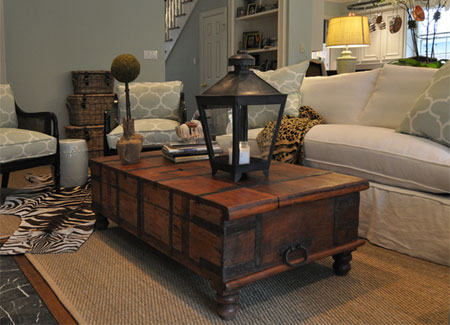Restore antique furniture
While restoring a genuine antique is usually a job for a professional, it is possible to tackle wear and tear on everyday items yourself. You only need a few materials and supplies to do a project that will restore your furniture to good condition. Below are some repair and restoration techniques to cope with some of the more common problems.

Before you start:
Don’t tackle any items that you think may have an ‘antique value’ before having them checked by an antique restorer. It’s important to work carefully! Frequently stand back to judge the results as it’s very easy to cause further damage through enthusiasm.
Removing encrusted wax:
Use Woodoc steel wool and mineral turpentine to gently rub the surface. This will remove wax that has accumulated over time. As you rub with steel wool in one hand, have a soft cloth in the other to wipe away the residue. Depending on the amount of wax that has built up, you may need to do this a couple of time. See tips on removing built up wax.It’s not a good idea to allow wax to build up for too long, as wood needs to breathe and layer upon layer of wax will eventually block the breathing process and the wood will dry out. Try not to leave restoration of waxed furniture for longer than two years.After repairing any defects, apply Woodoc Antique wax or Wood Penetrating Wax to the surface according to the instructions, and using a soft cloth to buff the surface.
Scratches:
If you only have a few minor scratches to conceal, you can use a Liberon wax crayon before buffing with a soft cloth.If they are only fine hairline scratches, a good buffing with Antique Wax should remove.

Ring marks:
We have discussed how to remove ring marks previously. Most rings have only damaged the wax layer or surface polish and can be rubbed out with plenty of elbow grease. Finally, wax and buff the surface.
Small dents:
To raise a dent in a tabletop, lay a damp cloth over it and apply the tip of a hot iron to the cloth. The steam swells the wood fibers to their original shape. Then repair the damaged finish.
Woodworm holes:
Filler sticks of coloured wax are ideal for filling small cracks and woodworm holes. Rub the wax across the opening firmly to fill the holes and buff off the excess with a cloth. Wax filler sticks are available from craft shops and wood-finishing suppliers.

Cigarette burns:
Cigarette burns are one of the worst marks to remove from wood and if you buy secondhand furniture to restore, you will encounter many. The best way to remove a cigarette burn is to wipe over with Woodoc steel wool and mineral turpentine to remove any wax and also to gently buff the surface. You might be lucky to find that it is only a nicotine stain, which can be buffed away.However, if this process does not remove the mark, the best option would be to strip the entire area with steel wool and mineral turpentine and then give it a light sanding with 220-grit sandpaper. After wiping clean with a soft cloth and mineral turpentine, apply Woodoc antique wax or Deep Penetrating Wax.

Chipped wood:
Depending on how large these are you can either use wood filler for smaller chips, or an epoxy-putty for larger chips. When using wood filler for chipped wood, I like to add a small amount of wood glue to the mixture to give it more strength and help to mould it to the shape to be filled. See our Farmhouse Table project for tips on using wood filler.Epoxy filler is excellent for re-building chips in wood but it difficult to match as it does not stain easily and you need to shape and sand before the product dries. The best option is to buy some small tubes of artist’s oil paints in shades or burnt umber, black, white and ocher, and mix these until you achieve the right colour so that you can apply over the surface. With some practice you will find that the chips will be invisible.

Loose joints:
Joints that have not completely broken but are slightly loose can often be repaired by squeezing wood glue into the joint – a syringe in perfect for this. Use a clamp to hold the pieces together as the glue sets. For joints that have broken apart, clean all the surfaces with a wood chisel or craft knife, scraping away old glue and dirt to expose bare wood so that the wood glue has a good surface to bond with.Use a stiff artist’s paint brush to apply wood glue and push the joint together. Use clamps to hold the joint firmly together for at least six hours.



Comments
Add comment